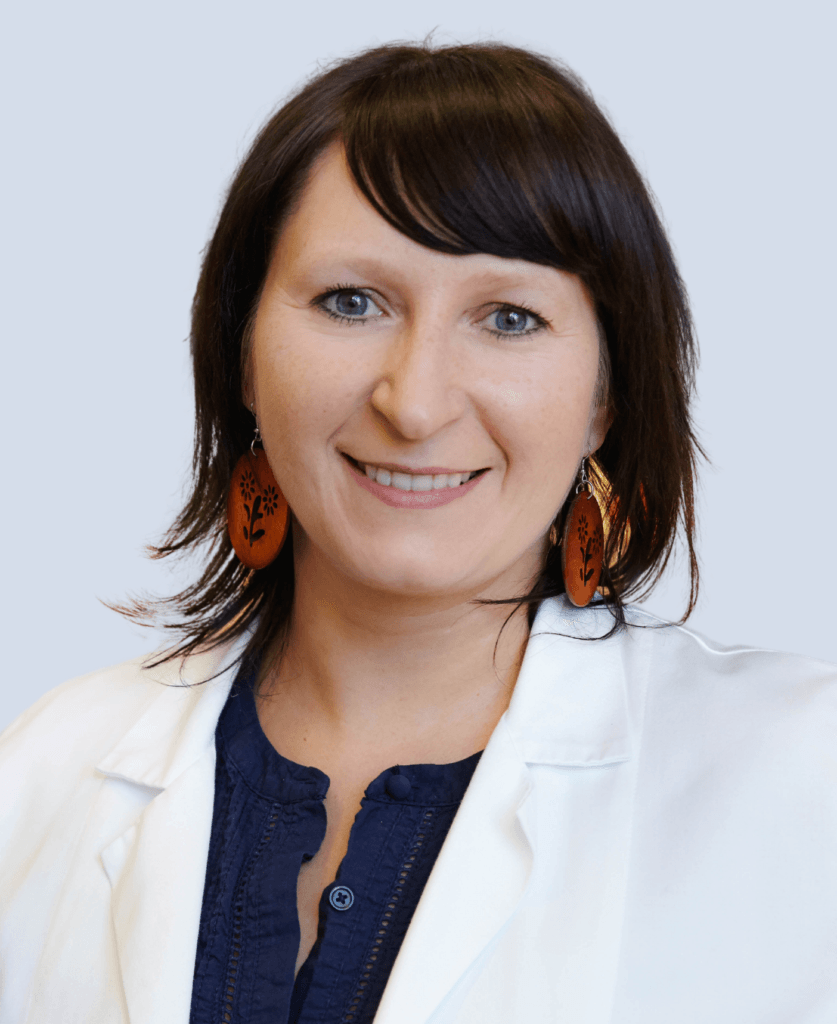23 September 2021
Skin researcher Dr. Beate Lichtenberger from the Medical University of Vienna in Austria is this year’s winner of the LEO Foundation Award – Region EMEA worth USD 100,000.
Beate Lichtenberger’s research aims at a better understanding of how fibroblasts – an important cell type that keeps our skin smooth and elastic – affect skin cancer, skin regeneration and skin diseases like scleroderma and keloid scars. Beate has already provided key contributions to the understanding of basic skin biology as well as new insights into the processes of wound regeneration and skin cancer development showing true therapeutic potential.
Curiosity-driven research
Ida Brams, Chief Grant Officer at the LEO Foundation, is excited about honoring Beate with the award:
“In the LEO Foundation, we are excited to honor an outstanding and curious young researcher like Beate, who has already shown exceptional talent and perseverance. As an experimentalist, Beate has developed new techniques in the lab and demonstrated that she can develop her research in new directions by combining expert theoretical knowledge, practical skills, and scientific curiosity,” says Ida Brams.
“Beate is an exceptionally talented young scientist showing huge potential for a continued career as an independent scientist and research leader,” Ida Brams continues.
With a focused research vision, Beate has established a successful research group at the Medical University of Vienna that holds promise for a pioneering piece of work. The lab addresses the yet unresolved role of cancer-associated fibroblasts in malignant skin cancer using innovative techniques including in vivo lineage tracing, single-cell transcriptomics, and mass cytometry. Thus, the Lichtenberger lab has already published important results in high impact journals, e.g., JID, FASEB J, Nature, Cell and Science Translational Medicine.
Beate Lichtenberger
Principal Investigator, the Medical University of Vienna, Austria

2016 – present
Principal Investigator at the Skin & Endothelium Research Division (SERD), Department of Dermatology, Medical University of Vienna, Austria
2012 – 2016
Postdoctoral studies at the Centre for Stem Cells & Regenerative Medicine, King’s College London, UK
2011 – 2012
Postdoctoral studies at the Wellcome Trust Centre for Stem Cell Research, University of Cambridge, UK
2009 – 2011
Postdoctoral studies at the Institute of Cancer Research, Department of Medicine I, Medical University of Vienna, Austria
2004 – 2009
PhD thesis at the Institute of Cancer Research, Department of Medicine I, Medical University of Vienna, Austria
Please visit Lichtenberger lab for more information
A true fascination of the skin
There is no doubt that Beate has a true passion for skin research. When asked what fascinates her about the skin, she shares the following:
“The skin is the largest organ of our bodies with many functions ranging from protection against physical or chemical harm to camouflage and temperature regulation, and it has important roles in immunity. In a way, the skin reflects our souls and physical condition – it reveals whether we feel good or bad or tired, and our age. Skin research is at least as multifaceted as the skin’s many different functions, and we have barely scratched the surface to understand what is happening in skin physiology and disease. Besides, the skin is an excellent tool to study stem cells and regeneration, it is easily accessible, and alterations can be seen almost immediately.”
The passion for skin research was nourished during Beate’s master studies at the Department of Dermatology and during her doctoral studies at the Institute of Cancer research in Vienna.
“Back then, I investigated how different signaling pathways cooperate in epidermal stem cells to promote skin cancer. I discovered a novel function for the so-called pro-angiogenic factor VEGF. It was very rewarding to see that my findings influenced the treatment regimen of various solid cancers as well as of the side effects of anti-EGFR cancer therapy – and it encouraged me to pursue a career in skin research,” says Beate.
From bench to bedside
Going forward, Beate and her team will continue to investigate the role of fibroblasts in skin cancer and how research results can be taken from bench to bedside.
“Our findings will hopefully provide the basis for establishing a panel of biomarkers for a novel tool – imaging mass cytometry (IMC) – that can provide us with high-dimensional imaging analysis of tumour tissue samples to predict patient prognosis and therapy outcome,” she explains.
Beate is thrilled to receive the LEO Foundation’s Region EMEA award.
“I am honored and proud to receive this prestigious award. It is very rewarding and a tremendous recognition of my team’s work to be selected from so many other talented researchers in dermatology. I’m pretty sure that the LEO Foundation Award will further improve the visibility of my lab and increase my chances of getting additional funding for our projects, and thus boost my scientific career,” says Beate.
An individual prize for young skin research talents
The LEO Foundation Award – worth USD 100,000 – is given three times annually – one in each of the three regions: Americas, EMEA and Asia-Pacific.
The award is an individual prize awarded in open competition. It was born out of the aim of advancing the understanding and treatment of skin diseases and strengthening the pipeline of excellent dermatology researchers. The award recognizes promising young talents and hopefully provides a boost to their future careers.
All applications are evaluated by a 9-member Global Review Panel appointed by their respective dermatology society in regions Americas, EMEA and Asia-Pacific.
Since the first LEO Foundation Award in 2008, more than 30 young skin researchers have received the award.
The winner of the award in Region EMEA is announced during the 50th Annual ESDR Meeting
